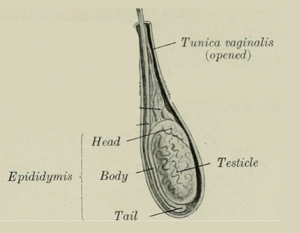Equine and Camelid Castration
How to – Camelid castration
Indications
Castration is performed to remove the aggression, offspring and attention deficits associated with male camelids. Llamas should be 18-24 mo of age and at their mature height. Alpacas should be at least 12 mo old. This minimizes the risk of lateral patellar luxation and stifle osteoarthritis.
Relevant anatomy

Preoperative management
Food restrictions:
Food should be withheld for at least 12 hours to avoid regurgitation and aspiration.
NSAIDs/analgesics:
Preoperative NSAID administration is indicated to minimize pain and inflammation. Postoperative NSAID administration is strongly recommended for 3 days, longer if complications. Common choices are oral meloxicam, iv flunixin meglumine or ketoprofen.
Antibiotics –not indicated
Tetanus prophylaxis or recent vaccination is required.
Local blocks:
Cord blocks are more challenging but more effective; 3-5ml lidocaine can also be injected directly into the testicle.
Position/preparation:
Scrotal castration can be done in the standing animal using xylazine and butorphanol in combination with an epidural or local block. However, recumbent castration is typically easier. Lateral or dorsal recumbency can be used under heavy sedation or general anesthesia. Lateral recumbency is better for lung ventilation and can be done with fewer people. The upper hindlimb should be pulled forward to expose the testicles.
Wool is duct taped out of the way. The scrotum is scrubbed and rinsed with alcohol before and after the local block is performed. The surgeon cleans hands, applies an alcohol based sanitizer and gloves.
Surgery Supplies:
- Small emasculator, carmalt or ligature (2-0 to 0 absorbable suture)
- Scalpel blade
- Sterile gauze
- Scissors
- Suture for closure – 3-0 absorbable, cutting needle
Surgical procedure-
Camelids can be castrated like horses (scrotal castration) or like dogs (prescrotal castration). The testicles are typically small enough to be ligated; emasculators are not required.
Incision made over testicle; tunic opened and testicle exposed OR testicle exposed within an intact tunic. The cord is ligated using a transfixation ligature or modified Miller’s knot. The testicle is removed by transecting the cord distal to the ligature. Repeat for the second testicle. Leave the incisions open for drainage.Prescrotal castration
Use fully aseptic technique, make an incision is made on the ventral midline, immediately cranial to the scrotum. Push a testicle forward and through the incision. Ligate the cord and transect distally to remove the testicle. Repeat with the second testicle pushed through the same incision. Close the incision using absorbable suture in a subcuticular or subcutaneous pattern.
Postoperative care
- No food until awake, then feed a normal ration
- Keep in a stall for monitoring for 24-48 hours
- Continue NSAIDs for 3 days.
- Monitor for swelling, signs of infection, fly strike
- Apply fly spray if indicated by season
Complications – rare
- swelling
- infection
- fly infestation
- difficulty urinating
Videos
Resources
Camelid castration guidelines, AASRP

